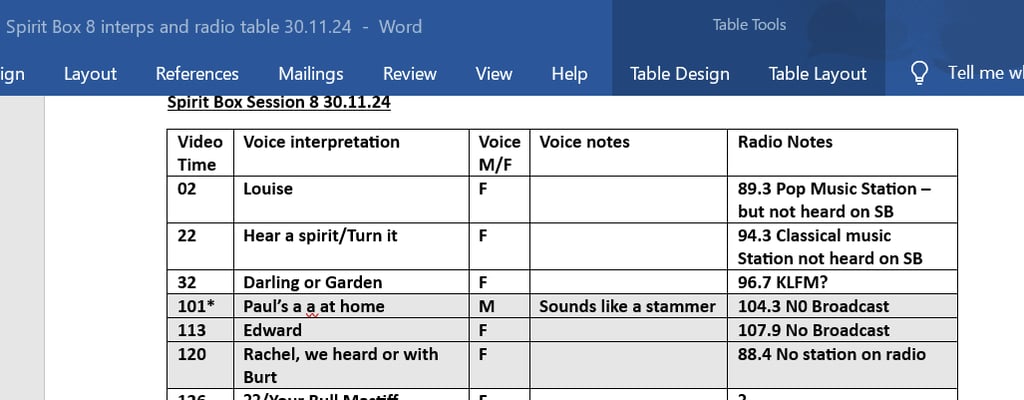How to best record EVP?
This is a very good question and one that I asked myself constantly through the early years of my experiments. However, I concluded that we cannot control all of the factors that enable good EVP recordings. Many writers on the subject have proposed that it is the 'communicators' that enable the evp to manifest and that conditions on their side may affect results as well as factors on our side. Some say that a bridge of respect and trust needs to be built between the experimenter and the communicators and that this bridge takes time to build. However there are some things that one can do to maximise conditions for successfully recording evp.
Use a good quality recording device and/or microphone
Use a good sound editor and become familiar with its features
Use a range of background sounds to record against, including FM radio static. Choose a static sound that is free from any radio broadcasts, not too harsh, and which sounds full and constant. Valve radios produce a more full bodied sound than transistor radios, but what ever you decide to use, quality is important. A good mixture of bass and treble tones help produce a fuller sound
Try recording against soft instrumental music or out in nature during soft rain and wind
Make sure your recording volume is around 80% max. Often evp can be very quiet
Make sure that any background noise or music you use is not so loud that it overwhelms the evp
Do a few short test recordings to check that all of the sound levels are optimized for evp recording
Record for three minutes at a time, ask just a few questions - leaving plenty of time for any replies, then review
Always use full enclosed headphones to listen to evp recordings
Methods of enhancing quiet or unclear EVP
My experience of recording evp has been that very often the evp are recorded at very quiet levels, often in the range of -9 to -19db. I'm not sure why. A minority, termed Class A evp - are as loud as our own speech when speaking into the microphone or recorder. The obvious way to enhance a quiet evp is to increase the volume of the evp in a sound editor. There are other enhancements that can be made to the sound file which can improve their volume and clarity.
Increase the volume by 300% - yes, 300 and sometimes 400% for very quiet sounds
Add a layer of smooth compression - this will trim peaks and troughs in the wave and equalize them
Add 12 to 16% noise reduction using - Auto spectral subtraction- this will reduce hiss and machine sounds
Play the evp and watch the db counter on your audio editor - note the average db of the evp. Then use a noise gate to accentuate sound at that db level
Save the evp and add 'enhanced' to it's filename. This will remind you that it is an enhanced file. Keep the original file for comparison.
Interpreting EVP
Ok, let's assume you have recorded some voice like sounds, if you haven't, keep trying regularly and you should capture some. Once you have recorded some anomalous voice-like sounds, the next challenge is to interpret what they might be saying. This is the most difficult part.
You are most likely to record evp in your natural speaking language, but for those of you who are bi- or multi-lingual, you may receive several languages. You will need to listen a dozen or more times to the short word or phase you have recorded. You may only be able to make out some of the words. You could be lucky and hear it loud and clear and have no doubt about the meaning, but this is not likely to happen all the time. List all possible interpretations, then have a break from it for a day. Go back another time and re-listen to it again, do you want to change your original interpretation, or add to it?
What kind of voice is it? Can you identify a gender? Does it sound like a young voice, a child or an elderly person?
Is there a discernable accent? Add these considerations to your notes.
Once you have done all you can with your own interpretations, perhaps it's time to ask others to listen. It is important at first, to not tell others what you think it is saying, to avoid priming and suggestion effects, encourage them to listen as many times as they need and then ask them to write down what they can hear. Find a third person and do the same. Then, reveal all of your interpretations together for further listening and discussion.


